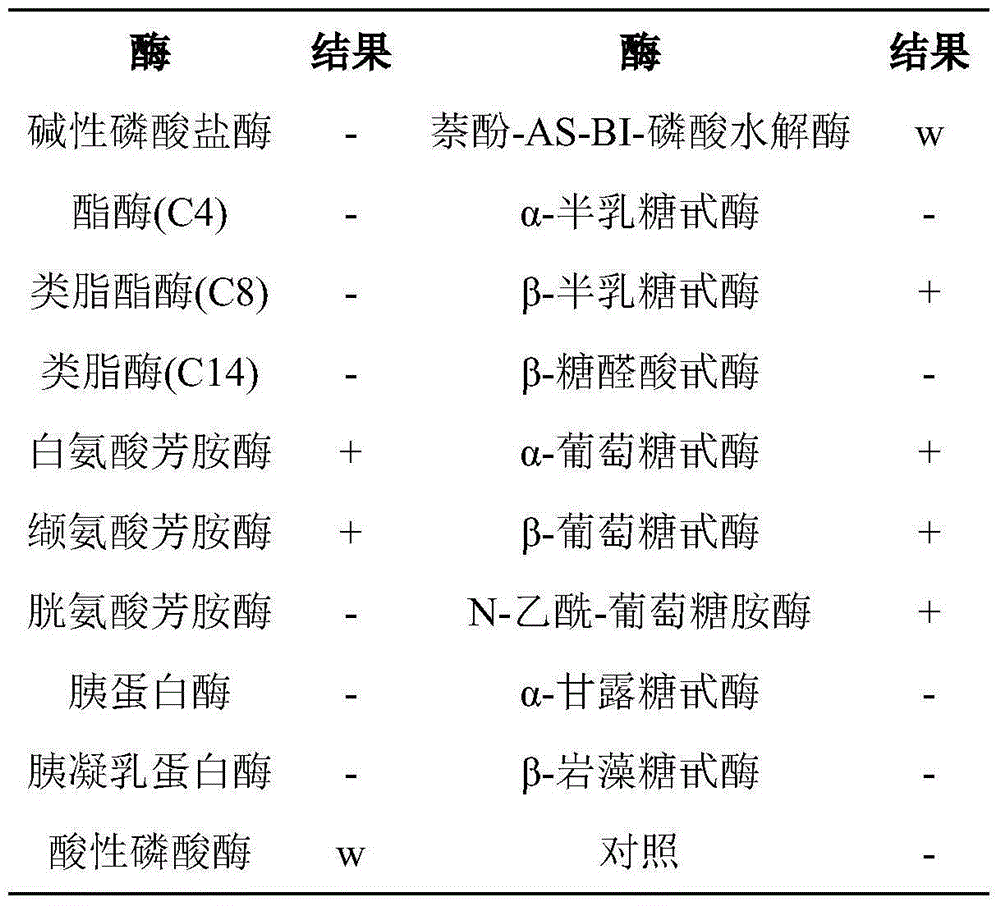Lactobacillus plantarum and application thereof
A technology of Lactobacillus plantarum and microbial strains, applied in the direction of application, bacteria, and microorganisms, can solve the problems of antibiotic resistance, excessive antibiotic residues in animal food, etc., and achieve the goal of improving production performance, improving health, and saving costs Effect
- Summary
- Abstract
- Description
- Claims
- Application Information
AI Technical Summary
Problems solved by technology
Method used
Image
Examples
Embodiment 1
[0014] Example 1 Isolation, screening, identification and preservation of Lactobacillus plantarum GLM101
[0015] 1.1 Isolation of strains
[0016] Take feces samples from healthy piglets, dilute them by 10, 100, and 1000 times with sterile water respectively, take 200 μL and spread them on MRS solid medium, incubate at 37°C for 48 hours, pick colonies, streak MRS medium, and purify 4 times Afterwards, a single colony was picked and cultured in MRS broth to the logarithmic phase, added with a final concentration of 20% glycerol, and stored at -80°C for future use. After Gram staining, catalase test, nitrate reduction test and 16SrDNA sequencing.
[0017] 1.2 Identification of strain morphological characteristics
[0018] Take a single colony of the purified strain (named GLM101), transfer it to MRS solid medium (agar), and culture it in a constant temperature incubator at 37°C for 24h, 36h, and 48h, and observe the size, color, edge, and convexity of the colony, respectively...
Embodiment 2
[0078] The preparation method of embodiment 2 bacterial strain GLM101 solid fermentation product
[0079] 1) Preparation of strains and their seed solution
[0080] The lactic acid bacteria strain GLM101 was activated on the MRS agar plate, and a single colony was picked and inoculated in the MRS liquid test tube. After culturing at 37°C for 24 hours, it was transferred to the MRS liquid medium with 2% inoculum, and cultured for 24 hours as the seed liquid.
[0081] The main components of MRS medium are peptone 10.0g, beef extract 10.0g, yeast extract 5.0g, diammonium hydrogen citrate 2.0g, glucose 20.0g, Tween 801.0mL, sodium acetate 5.0g, dipotassium hydrogen phosphate 2.0g, sulfuric acid Magnesium 0.58g, manganese sulfate 0.25g, distilled water 1000mL, pH6.2~6.6. The optimum pH is 6.0, the optimum temperature is 37°C, facultative anaerobic.
[0082] 2) Vaccination
[0083] The prepared seed solution was inoculated into the configured high-density solid medium (containing...
Embodiment 3
[0087] Example 3 Effect of solid fermentation product of bacterial strain GLM101 on production performance of nursery pigs
[0088] 3.1 Experimental animals and grouping
[0089] A total of 216 weaned piglets at the age of 32 days were selected as the experimental subjects, including 108 piglets in the experimental group and 108 piglets in the control group, and were fed to 77 days old. The experiment started from March 4, 2013 to April 18, 2013, and lasted for 45 days.
[0090] 3.2 Experimental design
[0091] Control group 1: the basal diet was not added with solid fermentation products of the strain GLM101;
[0092] Control group 2: Add 0.1% of a similar product in the market to the basic diet;
PUM
 Login to View More
Login to View More Abstract
Description
Claims
Application Information
 Login to View More
Login to View More - R&D
- Intellectual Property
- Life Sciences
- Materials
- Tech Scout
- Unparalleled Data Quality
- Higher Quality Content
- 60% Fewer Hallucinations
Browse by: Latest US Patents, China's latest patents, Technical Efficacy Thesaurus, Application Domain, Technology Topic, Popular Technical Reports.
© 2025 PatSnap. All rights reserved.Legal|Privacy policy|Modern Slavery Act Transparency Statement|Sitemap|About US| Contact US: help@patsnap.com



